GPU Only Works In Second Slot – Complete Guide – 2024!
Have you ever faced the perplexing situation where your GPU only works when plugged into the second slot on your motherboard? You’re not alone. This issue can be a real headache, especially if you’re unsure why it’s happening. Understanding the underlying reasons and potential solutions is crucial to ensure your gaming or work rig performs at its best.
“If your GPU only works in the second slot, it could be due to a faulty primary PCIe slot, motherboard BIOS settings, or compatibility issues. Ensure the primary slot is clean, check BIOS configurations, and update your motherboard drivers to resolve the issue”
Is your GPU only working in the second slot? Unravel the mystery and restore your PC’s peak performance with our expert guide. Say goodbye to slot-shuffling frustrations!
Understanding GPU Slots!
Before diving into the reasons behind the issue, it’s essential to understand the types of GPU slots. Modern motherboards typically come with multiple PCIe slots, each with different lane configurations (x16, x8, x4, etc.). The primary slot, often the topmost, is usually the fastest (x16), offering the best performance for your GPU. Secondary slots might be slower, affecting the overall performance if the GPU is placed there.
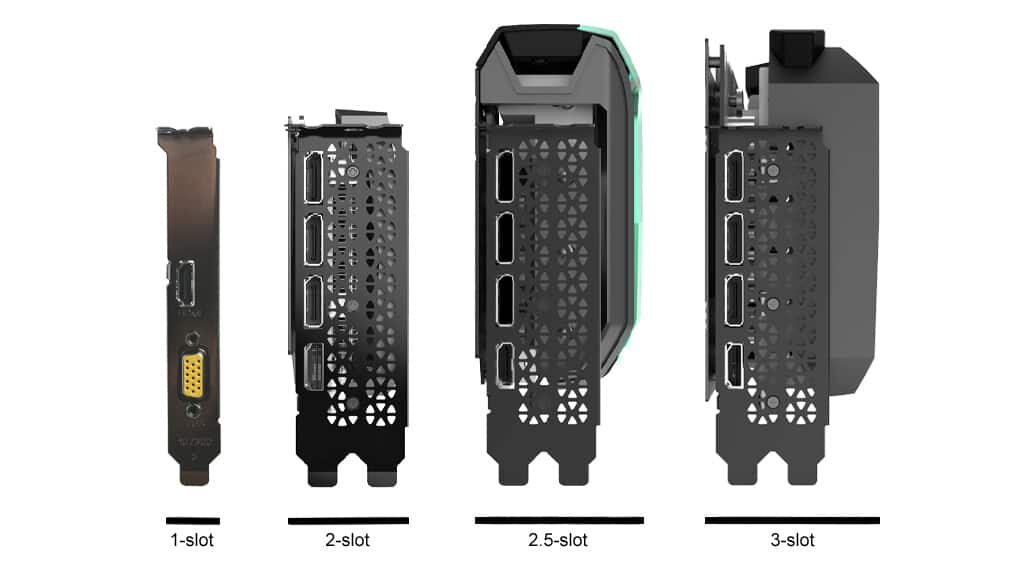
Possible Causes for GPU Only Working in the Second Slot!
Compatibility Issues
One of the common reasons is compatibility issues between the motherboard and GPU. Not all GPUs are fully compatible with all motherboards, especially older models. Ensuring that your GPU and motherboard are designed to work together is crucial.
BIOS Settings
Incorrect BIOS settings can also lead to this problem. If the BIOS is not configured correctly, it might not recognize the GPU in the primary slot, causing it to work only in the second slot.
Slot Damage or Dirt
Physical damage or dirt in the first slot can prevent the GPU from making proper contact with the motherboard. This can lead to connectivity issues, forcing the GPU to work only in the second slot.
Power Supply Problems
An insufficient power supply (PSU) can also be the culprit. If the PSU can’t provide enough power to the GPU when it’s in the primary slot, it might work only when moved to the second slot, where the power demand might be slightly lower.
Driver and Software Issues
Outdated or corrupt drivers can cause a range of problems, including the GPU not being recognized in the primary slot. Ensuring that your drivers are up-to-date is essential for proper GPU functionality.
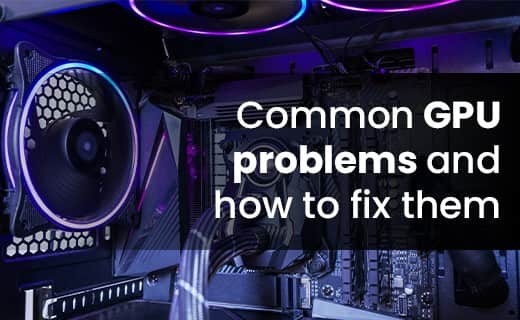
Diagnosing the Problem!
Visual Inspection
Start with a visual inspection of the GPU slots. Look for any physical damage or dirt in the first slot that might be causing the issue.
BIOS Check
Access the BIOS settings and ensure that the GPU is set to work in the primary slot. Look for any settings related to PCIe configurations and adjust them if necessary.
Driver Check
Check if your GPU drivers are up-to-date. Sometimes, simply updating or reinstalling the drivers can solve the problem.
Power Supply Verification
Verify that your PSU is providing adequate power to the GPU. This might involve checking the power connectors and ensuring that the PSU can handle the GPU’s power requirements.
Solutions to Common Issues!
Cleaning the Slot
If dirt is the problem, cleaning the GPU slot can help. Use a can of compressed air to blow out any dust or debris. Ensure the PC is powered off and unplugged before doing this.
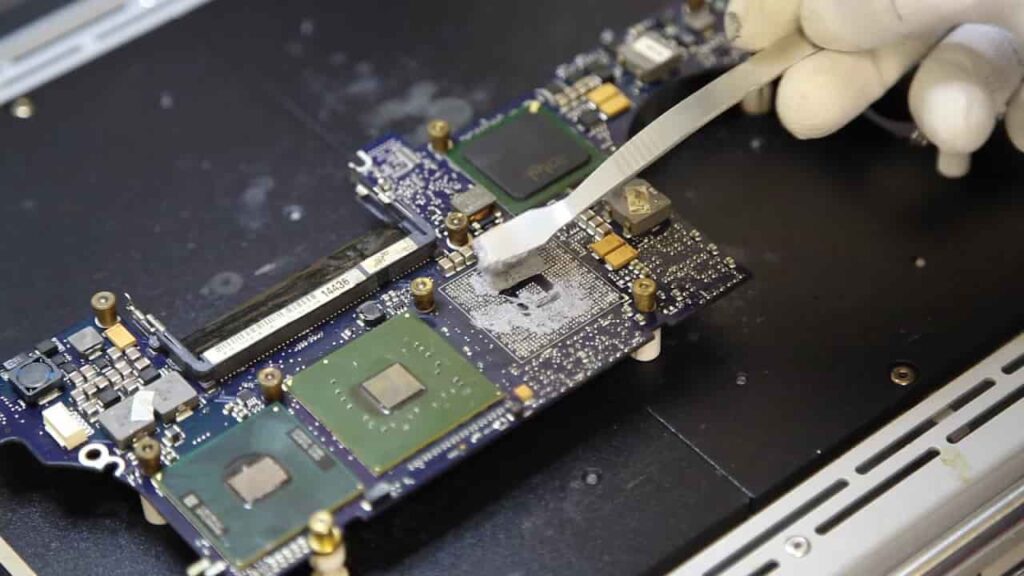
Adjusting BIOS Settings
Configuring the BIOS settings can sometimes resolve the issue. Access the BIOS menu during startup and look for settings related to PCIe slots. Ensure that the primary slot is enabled and configured correctly.
Updating Drivers
Updating your GPU drivers can often fix recognition issues. Visit the GPU manufacturer’s website to download the latest drivers and install them.
Checking Power Supply
Ensure that your PSU is sufficient for your GPU. Check the wattage and ensure that the power connectors are securely attached to the GPU.
Does a Graphics Card Have to Go in the First PCI-E Slot?
No, a graphics card doesn’t have to go in the first PCI-E slot, but it’s usually best for performance. The first slot often has the most lanes, providing the best speed. However, check your motherboard manual for details.
Should GPU go in the first or second slot?
Yes, the GPU should go in the first slot on your motherboard. The first slot is usually the fastest and offers the best performance for your graphics card. Only use the second slot if there are issues with the first one.
Can I use a PCIe 4.0 GPU in a 3.0 slot?
Yes, you can use a PCIe 4.0 GPU in a PCIe 3.0 slot. However, it will run at PCIe 3.0 speeds, which might be slightly slower but usually not noticeable for most tasks.
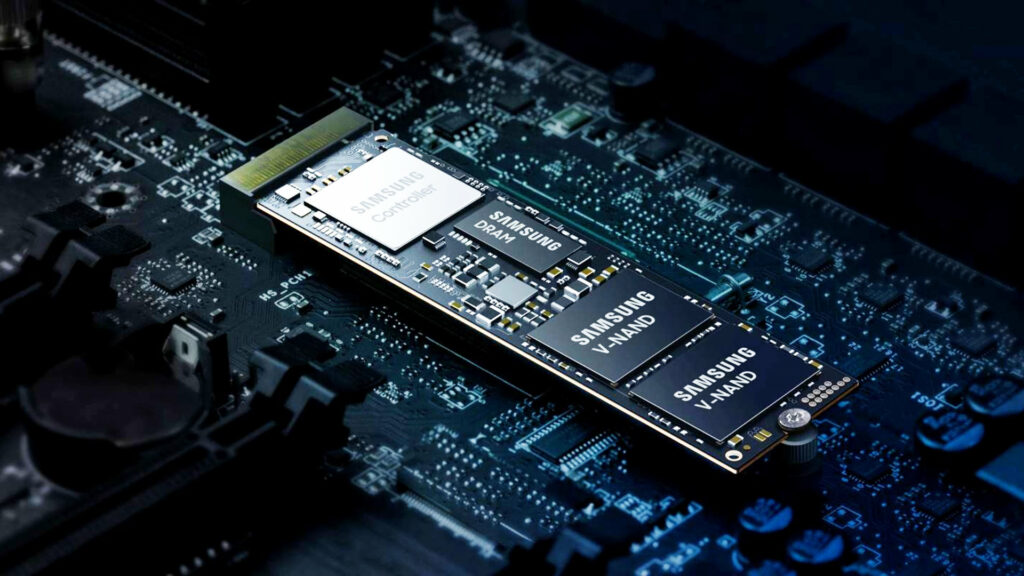
Does the PCIe slot matter for the GPU?
Yes, the PCIe slot matters for a GPU. The primary slot, usually the top one, offers the best performance. Using a secondary slot might reduce performance, so it’s best to use the main PCIe x16 slot.
What does 2-slot GPU mean?
A 2-slot GPU means the graphics card takes up two slots on your computer’s motherboard due to its larger size. This is common for more powerful GPUs, which need extra space for cooling and performance.
Why does GPU Only work in the Second Slot?
A GPU might only work in the second slot because of compatibility issues, wrong BIOS settings, damage or dirt in the first slot, power supply problems, or outdated drivers. Checking and fixing these can often solve the problem.
Does GPU only work in one slot?
If your GPU only works in one slot, it might be due to compatibility problems, dirty or damaged slots, incorrect BIOS settings, power issues, or outdated drivers. Check these areas to identify and fix the problem.
Can you install a video card into a PCI slot?
Yes, you can install a video card into a PCI slot, but most modern video cards use PCIe slots, which are faster. PCI slots are older and slower compared to PCIe slots. Make sure your card and motherboard match.

Can a GPU be pushed into a PCIe slot?
Yes, a GPU can be pushed into a PCIe slot, but it should be done carefully. Align the GPU with the slot and gently press it in until it clicks into place, ensuring a secure connection.
Is it okay if my graphics card doesn’t click into the PCIE slot even though the computer recognizes the GPU?
No, It’s not ideal if your graphics card doesn’t click into the PCIe slot, even if the computer recognizes it. The click sound helps ensure a secure connection. If it’s not clicking, check for alignment issues or try reseating the card.
Will my graphics card work in all PCIe slots?
Your graphics card might not work in all PCIe slots. It usually works best in the top PCIe x16 slot. If it only works in another slot, it could be due to motherboard settings, slot damage, or power issues.
Is my graphics card dead or is my PCI-E slot not working?
Your graphics card might not be dead. It could be the PCI-E slot that’s the issue. Test the card in another slot or computer. If it still doesn’t work, the card may be faulty.
Is it possible for a GPU to work without being fitted in snugly in the PCI-E slot?
No, a GPU cannot work properly if it’s not fitted snugly into the PCIe slot. A loose connection can cause hardware malfunctions or the GPU not being recognized by the system at all. Always ensure a secure fit.
Can you damage your graphics processing unit (GPU) by using too much force when installing it into its slot on the motherboard (PCI-E)?
Yes, using too much force when installing a GPU can damage it or the motherboard slot. Be gentle and align the GPU correctly before inserting it. If it doesn’t fit easily, double-check the position and try again carefully.
The same GPU won’t work in the first PCIe slots in 2 different motherboards?
If the same GPU doesn’t work in the first PCIe slot on two different motherboards, it could be due to faulty slots, outdated BIOS settings, or hardware compatibility issues. Check and update BIOS, clean slots, or try a different GPU.
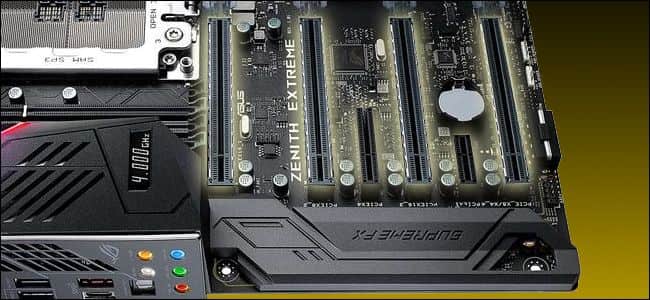
Can a graphics card run on a PCIe without an express slot?
No, a graphics card cannot run on a PCIe without an express slot. PCIe slots are essential for connecting the graphics card to the motherboard, providing the necessary interface and bandwidth for it to function properly.
How do I fix a motherboard PCIE slot with a GPU attached but no display but the fan spins also the GPU perfectly works with another computer?
To fix a motherboard PCIe slot where the GPU’s fan spins but there’s no display, try updating the BIOS, resetting the CMOS, checking the power supply connections, and ensuring the slot is clean. If it still doesn’t work, the slot might be defective.
Does it matter which PCIE slot you put a graphics card in?
Yes, it matters which PCIe slot you use for a graphics card. The primary (top) slot usually offers the best performance because it has more bandwidth. Using a lower slot might reduce performance, especially for high-end graphics cards.
My gaming PC has two PCI-E slots. If I put two graphic cards in both slots, do the GPUs have to be the same model or can I use two different models and connect via SLI bridge?
For SLI, your GPUs need to be the same model. You can use two different models without SLI, but they won’t work together to improve performance. SLI requires identical cards for optimal gaming performance.
What PCIe slot should I use for my GPU?
For best performance, use the top PCIe slot for your GPU, usually the one closest to the CPU. This slot typically offers the fastest connection and the best speed for your graphics card.
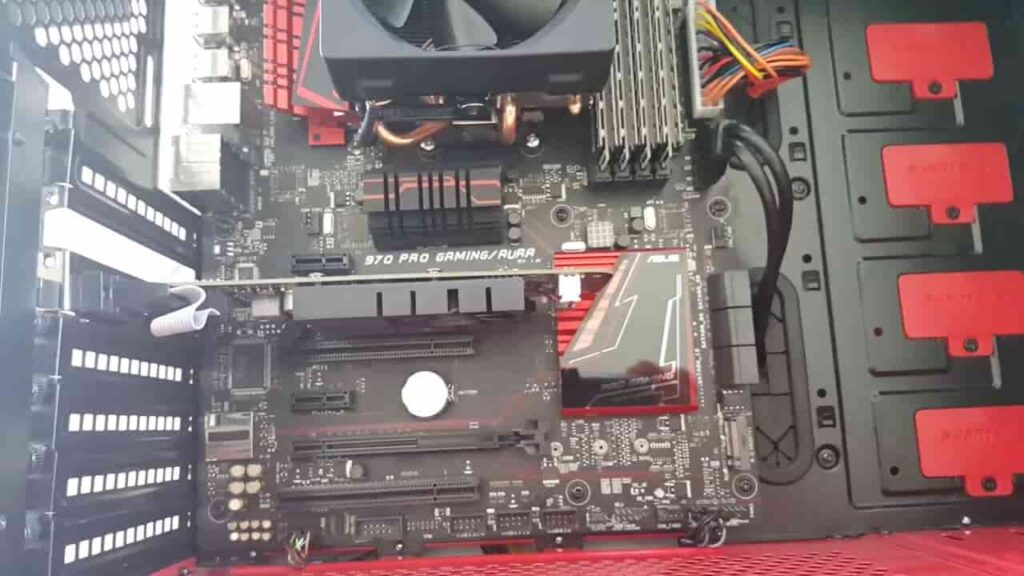
How do I remove my GPU? I can’t find any retention clip.
To remove your GPU, first, unplug all cables from it. Then, unscrew the GPU from the case and gently pull it out of the PCIe slot. If there’s no visible retention clip, it may be held in place only by screws.
Is it true that the more graphics I use in games, the more the graphics card “dies”?
No, using your graphics card more in games doesn’t make it “die” faster. Graphics cards are designed to handle high usage. Just make sure to keep them cool and well-maintained to ensure they last longer.
What is the purpose of having more than 1 PCIe x16 slots?
Having more than one PCIe x16 slot lets you use multiple graphics cards or other expansion cards for better performance, more features, or additional capabilities in your computer. This setup is often used for gaming, professional work, or data processing.
Is it possible to use a computer without a graphics card/GPU?
Yes, you can use a computer without a graphics card, as long as it has integrated graphics on the motherboard or CPU. This setup is suitable for basic tasks but may struggle with games or high-resolution work.
What is a graphics card slot called?
A graphics card slot is called a PCIe slot. It’s a special slot on the motherboard where you insert the graphics card to improve your computer’s graphics performance.
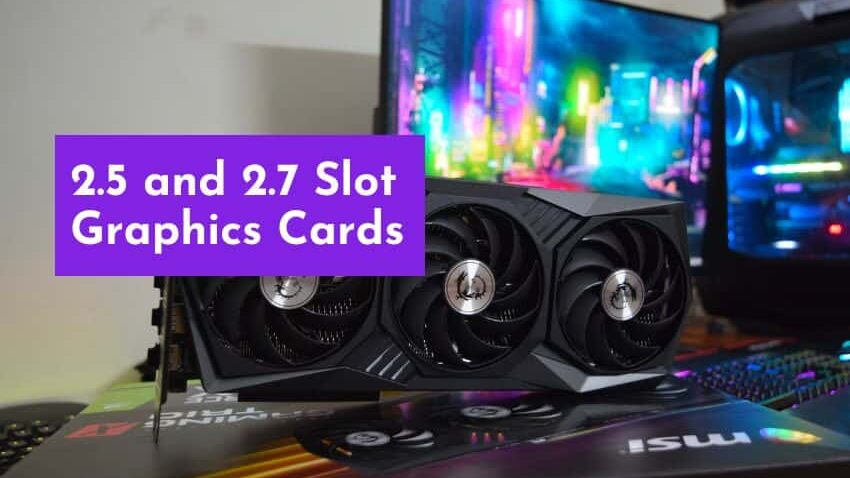
What is the best GPU for PCI Express V1.1 X16 slot?
For a PCI Express V1.1 X16 slot, a good GPU option is the NVIDIA GTX 1050 Ti or AMD RX 560. These cards are compatible with older slots and offer solid performance for most tasks.
Can I plug a GE Force 1030 into a PCIE X4 slot and still have a dual screen working?
Yes, you can plug a GeForce 1030 into a PCIe x4 slot and still use dual screens. The card works in x4, x8, or x16 slots, and your dual monitor setup will function normally.
Does it matter which PCIE slot you put a graphics card in?
Yes, it matters. Graphics cards usually perform best in the top PCIe slot because it often provides more bandwidth. However, some systems may work well with other slots, so check your motherboard’s manual for the best slot to use.
How do you tell if your motherboard has a PCI Express slot?
To check if your motherboard has a PCI Express slot, look for a long, thin slot on the motherboard that is typically located near the CPU. It’s usually labeled “PCIe” and is used for graphics cards and other expansion cards.
How do you recognize x1,x4,x8, and x16 PCI e slots on the motherboard?
You can recognize PCIe slots by their length. An x1 slot is the shortest, x4 is longer, x8 is even longer, and x16 is the longest. The numbers indicate how many data lanes the slot can use.
Can I fit a card that is PCI Express 8x 3.0 in an x16 2.0 slot?
Yes, you can fit a PCI Express 8x 3.0 card into an x16 2.0 slot. PCIe slots are designed to be backward and forward compatible, so the card will work, though it will run at 8x speeds.
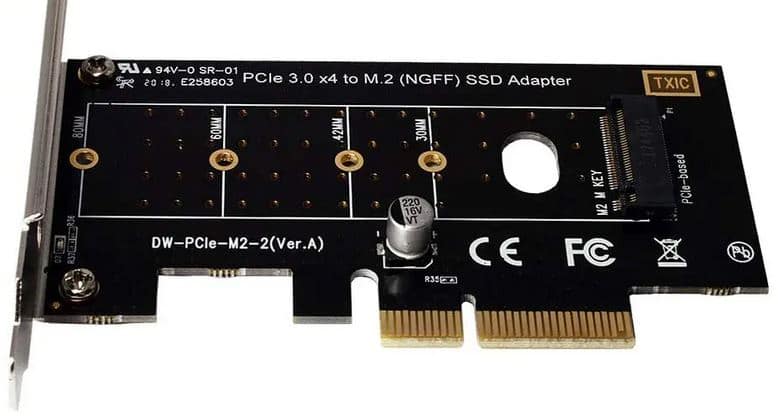
Is a PCIe X16 slot the only requirement for your motherboard to support Nvidia RTX GPUs?
No, a PCIe x16 slot is not the only requirement. Your motherboard also needs to support the correct PCIe version and have enough power supply. Check compatibility with the Nvidia RTX GPU’s specific requirements for best performance.
Does the PCIE 2.0 X16 graphics card work in a PCIE 3.0 x16 slot?
Yes, a PCIe 2.0 x16 graphics card works in a PCIe 3.0 x16 slot. PCIe 3.0 is backward compatible with PCIe 2.0, so your older card will fit and function properly in the newer slot.
FAQS:
Why does my GPU work only in the second slot?
Your GPU may only work in the second slot because the first slot could be damaged, not properly connected, or not set up correctly in your computer’s BIOS. Try cleaning the slot and checking BIOS settings for fixes.
Can a dirty slot cause GPU issues?
Yes, a dirty slot can cause GPU issues. Dust and dirt can block the connection between the GPU and the slot, leading to problems. Cleaning the slot carefully can help fix these issues.
How often should I clean my GPU slots?
You should clean your GPU slots every 6 to 12 months to keep your computer running smoothly. Dust and debris can build up, affecting performance. Regular cleaning helps maintain good airflow and prevents overheating.
What BIOS settings affect GPU functionality?
BIOS settings that affect GPU functionality include the PCIe slot configuration and GPU priority settings. Ensure the PCIe slot is set to “Auto” or “PEG” and check that the GPU is recognized and enabled in the BIOS.
How do I know if my PSU is adequate for my GPU?
To check if your PSU is adequate for your GPU, compare the PSU’s wattage to the GPU’s power requirements listed in the manual. Ensure the PSU provides enough power and has the right connectors for your GPU to function properly.
Conclusion:
“If your GPU only works in the second slot, it may be due to several issues. Common causes include a damaged or dirty primary slot, incorrect BIOS settings, compatibility issues, or power supply problems. To fix this, clean the slot, check and adjust BIOS settings, update drivers, and ensure your power supply is adequate. If these steps don’t work, there might be a problem with the GPU or motherboard”
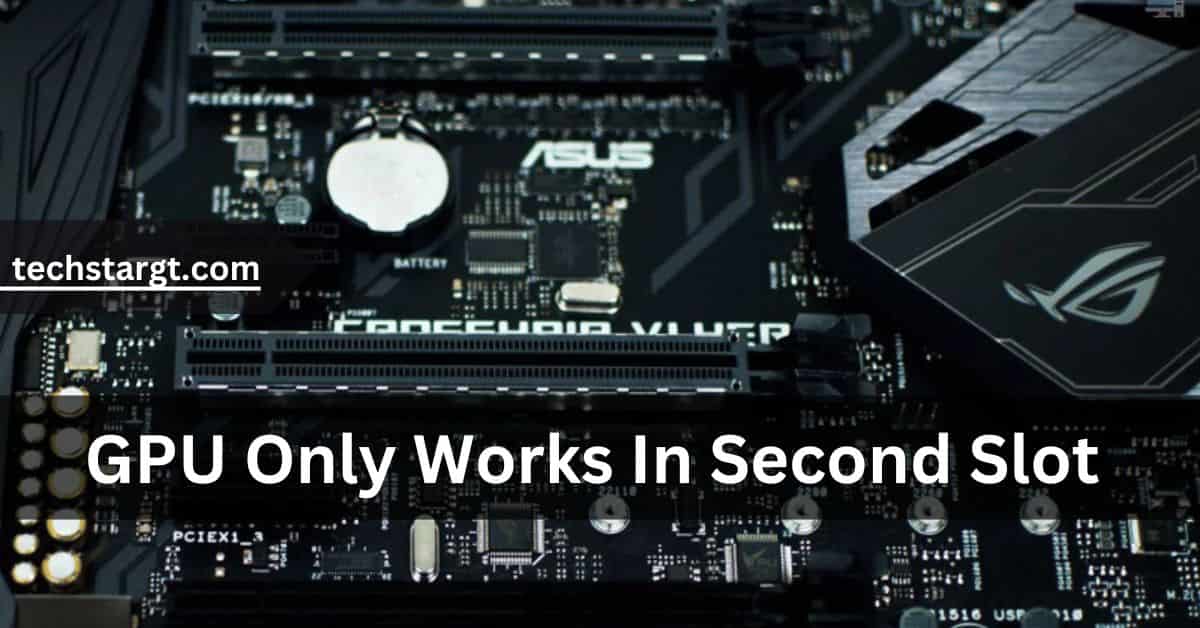

3 comments